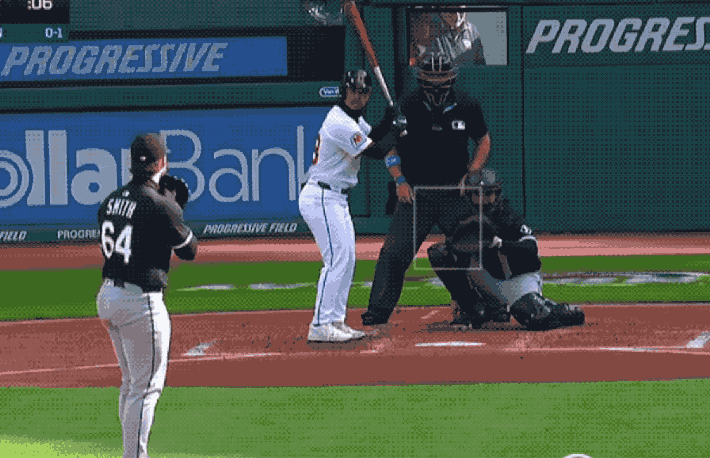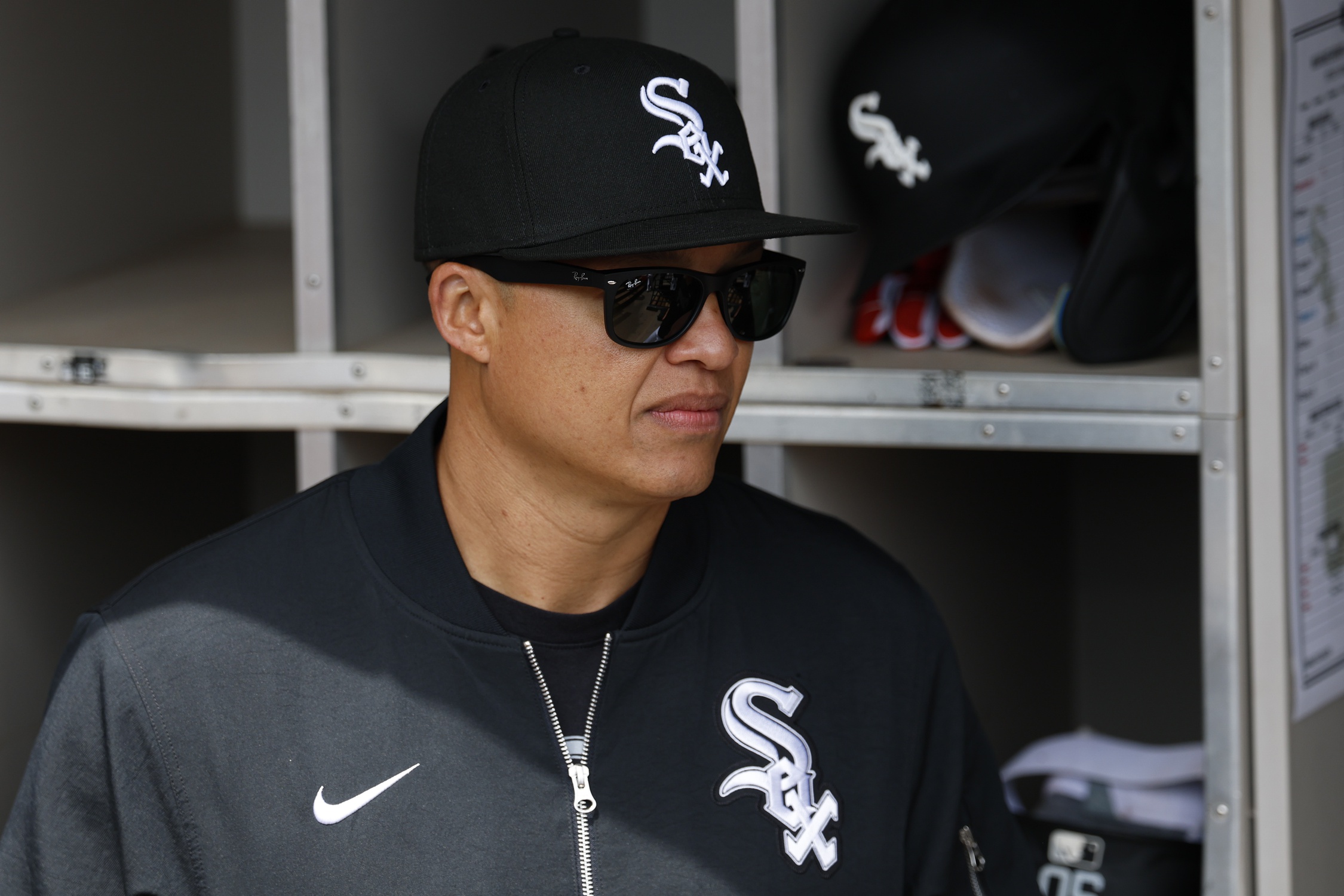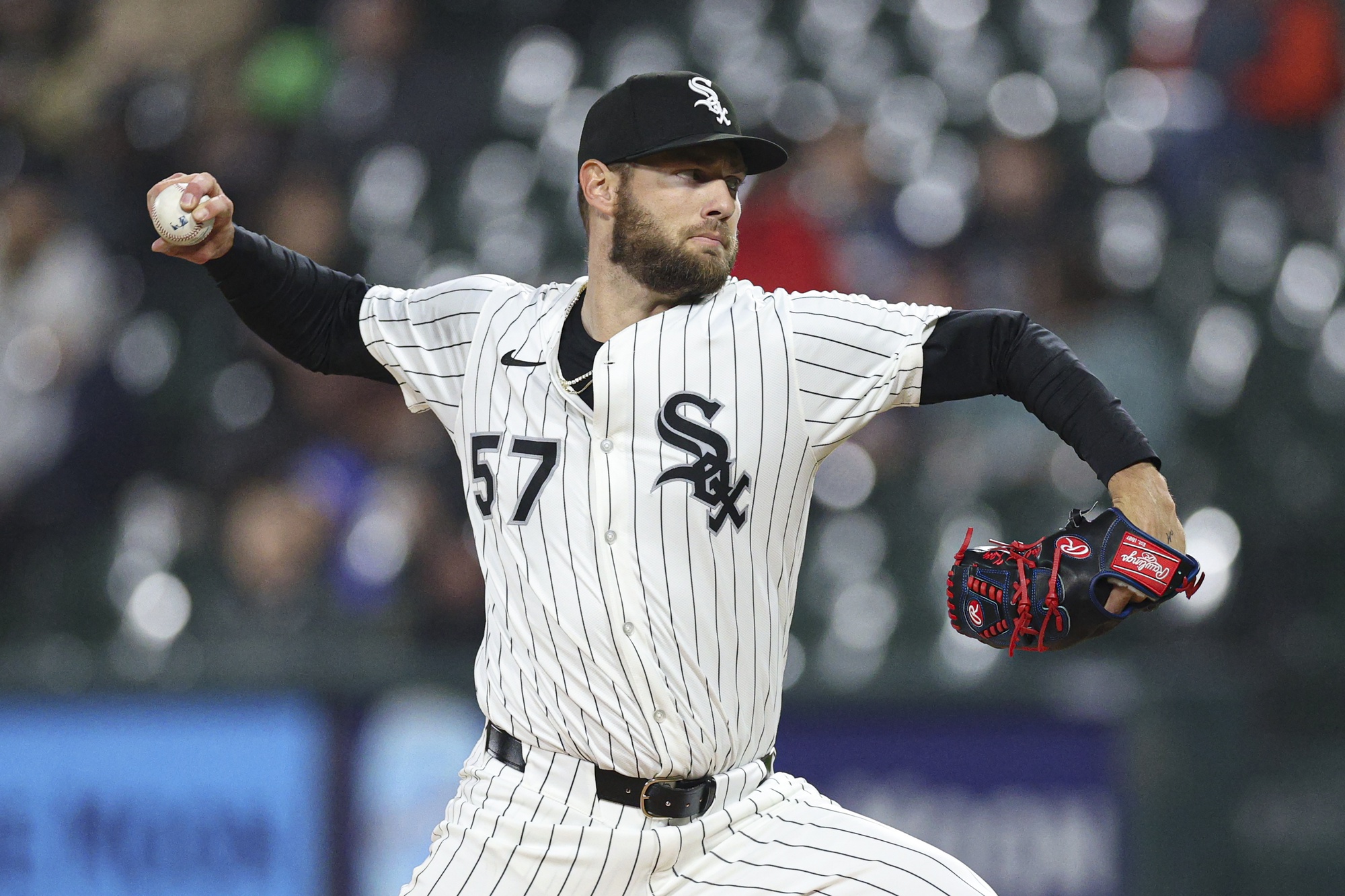Between Davis Martin and Grant Taylor's kick changes and Shane Smith and Sean Burke's seam-effects offerings, the White Sox were quite clearly proud of the changeups they were developing this spring.
"With the major league group, the changeups were blowing me away with how much better they were," said senior advisor to pitching Brian Bannister. "That's a testament to the [player development] staff, the coaches, the players being willing to buy in and actually put in the work this offseason and come back with a new weapon. It'll be fun to see. It's not just Davis Martin, it'll be a lot of other guys who have ticked up a couple of notches on their changeup quality."
Surely you can understand by now why they're excited about what Smith came up with. Even if Smith's hardest changeup from Tuesday (92.3 mph) being hardest than his slowest fastball (92.0 mph) makes you wonder what "changeup" even means anymore, swings like these from Steven Kwan and José Ramírez just don't happen very often.


"We're not trying to kill velo, it's just rip it as hard as you can and let the movement happen," said pitching coach Ethan Katz, in a line that refers to both Smith and Martin. "It's more so the traditional four-seam changeup is the [velocity] separator one, whereas the two-seam orientation changeup is the one where [the movement] bottoms out and velo doesn't matter as much, as long as you get that bottom, especially off the fastball characteristics."
It's also fitting, as unlike someone such as Drew Thorpe, blessed with the ability to take velocity off his changeup while otherwise making it indistinguishable from his fastball, the excitement of Bannister and White Sox pitching development lay in the strides they made with pitchers who had not been able to throw effective traditional changeups before.
Burke, Martin, Smith, Taylor are all right-handed pitchers who would be described as having supination bias, meaning they are more comfortable rotating their wrist clockwise to rip off a breaking ball than pronating or turning over their wrist to generate arm side movement on a changeup. All had resorted -- and here's where it might be useful to mention Jordan Leasure as well -- to using a more vertically-oriented curveball to deal with opposite-handed hitters, who usually fare well against offspeed pitches that move toward them.
In collecting the stories of these pitchers' progressions, a commonality started poking out.
"Before TJ I could throw a changeup, and after TJ I couldn't," said Leasure, who has been working on a splitter as an alternative since this offseason.
"My best offspeed pitch in high school was a changeup," said Burke. "When I went to college I got Tommy John. When I got back from Tommy John my curveball was really good, my changeup sucked. I kind of flipped how I worked as a pitcher...I used to throw two-seamers, like ride-and-runners. After TJ, I threw high-carry four-seams and I could throw curveballs and sliders really well."
"I couldn't really throw a changeup before I had surgery, so I don't really know if I could pronate," said Smith. "But definitely after, I can't get inside the baseball that way at all."
It's more of a commonality with this group than any sort of rule, even if all the permanent post-TJ effects are another reason players tend to take a while to consider their options after an arm injury rather than listen to cries of just get the surgery already. Old friend Lucas Giolito feels he was always a natural pronator, favoring a big over-the-top curveball rather than a slider that darted to his glove side, and his feel for turning over a changeup only further bloomed after undergoing TJ. Reliever Penn Murfee has made his career out of his sweeping slider, and undergoing TJ in 2023 is the only thing that's made his fledgling efforts to develop a changeup feel realistic.
"I definitely feel like my pronation has gotten better," Murfee said. "You've got a new arm. You haven't thrown in a long time, like six, seven months. You start playing catch and once you start ramping it up, you do have to-- not re-learn how to throw, but you've got a healthy arm and you can do things you weren't able to do before."
But the commonality would suggest that the inefficiencies that the White Sox are trying to exploit are twofold. It's not just adding changeup variants to pitchers who have struggled to throw changeups, but pitchers who are locked into supination bias might become available for such a developmental project -- Smith being available in the Rule 5 draft, Taylor falling to the second round -- due to elbow reconstruction slowing their progression.
"You could be on to something with the Tommy John. I haven't dug that deep," Katz said. "Looking behind the curtain with Shane, he was fastball/curveball to lefties. There needed to be another dimension to him because the fastball kind of cuts and the breaking ball is coming in and we need something going away. That was the big project in the offseason for him, to develop the changeup. And obviously for Davis it was a similar aspect where the fastball and slider is great, but we need something to go the other direction."
To be clear, asking Katz about this bizarre player acquisition/development theory two hours before first pitch was like asking a line cook about how climate change will affect where he sources his cilantro from during the middle of dinner rush. I just wanted to include the part where he said I might be on to something.
There are two warts with this otherwise lightweight trend observation that are worth considering during a White Sox season that will once more be fraught with difficulty. Changeups tend to be chase offerings, even more so than breaking balls, with narrow -- if any -- portions of the strike zone where they can be effective. So they are a weapon, but not a cure to the White Sox pitching staff's larger lack of fastball quality.
Second, the trouble with asking about TJ after-effects in a major league clubhouse -- let alone the White Sox clubhouse -- is that all the interview subjects have intense survivor bias. Had they not found some way to keep improving amid rehab, or been permanently lessened by the ordeal, they simply would not be drawing a major league paycheck, sitting in a major league clubhouse and entertaining the curiosity of credentialed reporters.
"You move a little different. Slight changes in your body affect different stuff," Burke said. "I got [the tissue used to reconstruct my UCL] taken out of my leg, so my leg rehab affected how I move, how my hips move. I wasn't always this big."
Burke has tree trunks for legs, but described himself as weighing under 200 pounds (reminder: he's 6-foot-6) before his operation. He found a way to make the most of a year off with strength work. Adversity is not good in and of itself, just because the most successful athletes tend to treat it as an opportunity.
"I'm leaps and bounds a better pitcher than I was in '22," said Martin. "Who's to say if I didn't get hurt if I'd even be able to throw a kick change with where my wrist position is and whatever physiological thing. I don't want to think of a world without a kick change. If that was the payment for 14 months of rehab, I guess time will spent."
Dude, that's a big cost.
"It's a huge cost. But it's a really fun pitch."






